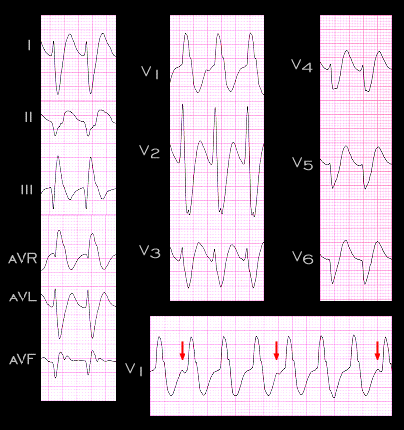
Another example demonstrating the usefulness of these various criteria is shown here. This wide complex tachycardia has an RR interval of 0.44 seconds (rate 136). The tracing is from a 60 year old male who also had a history of a prior myocardial infarction. The QRS complex measures 0.18 seconds and suggests right bundle branch block. The QRS complex in V1 shows a single positive component and the interval from the onset of the R wave to the nadir of the S wave in leads V2 and V3 exceeds 100ms. In addition, P waves can be identified in lead V1 (arrows) that are dissociated from the QRS complexes. These features identify this wide complex tachycardia as being ventricular in origin.
